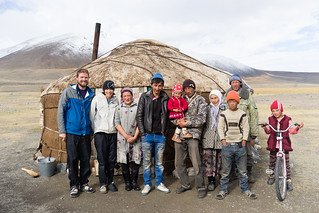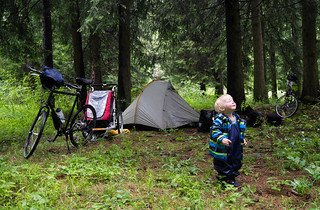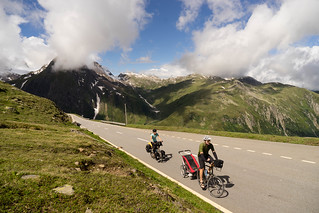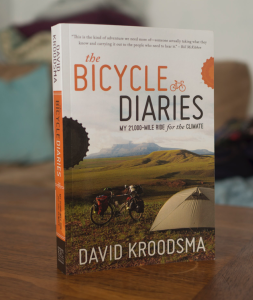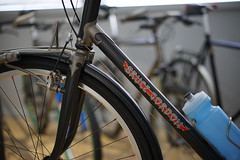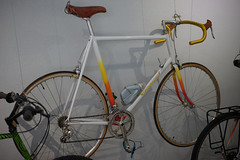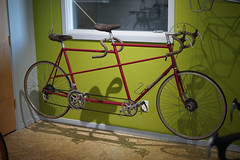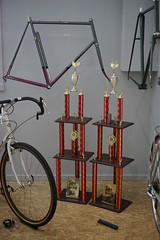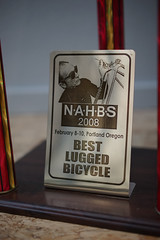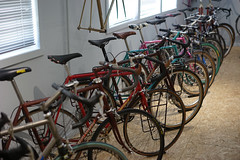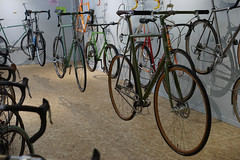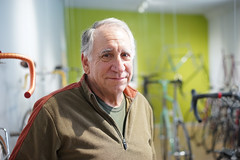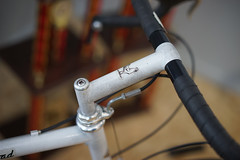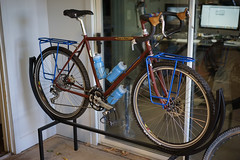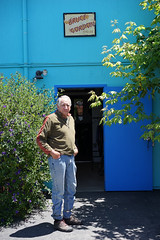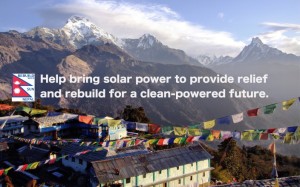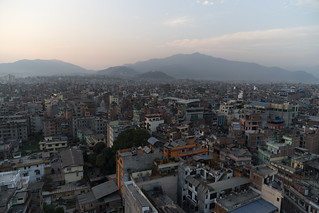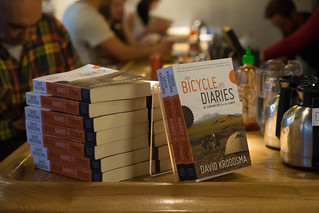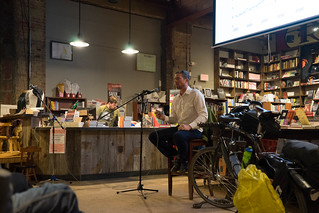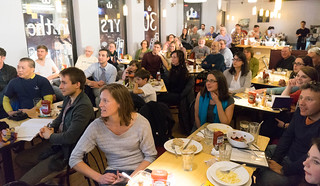I’m writing this from a plane, somewhere over the Pacific Ocean. Two days ago we flew from Yangon to Bangkok and spent 36 hours in the capital of Thailand, where we ate sticky rice, visited temples, and enjoyed a 90-minute massage. Then we flew overnight from Bangkok to Seoul, where we used a 12-hour layover to explore the cleanest and wealthiest city we’ve seen since Hong Kong. Now we are flying to Seattle, where Lindsey’s mother will meet us at the airport.
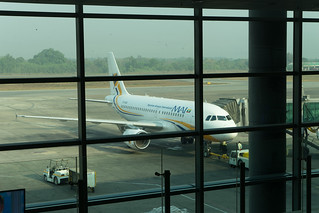
Over the past 10 months we’ve cycled 8,000 miles across Asia, visiting 12 different countries. We started in Istanbul and traveled east until we reached the East China Sea. We then looped southwest before riding east again, passing through South Asia and finishing along the Bay of Bengal and Andaman Sea.
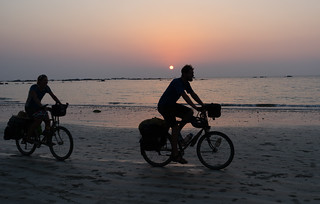
I’m trying to reflect on this journey and finding it difficult to do so. Asia is so big, so diverse, so much more than I anticipated. It feels impossible to summarize.
This journey was shorter in time and distance than my ride across the Americas, but it was more challenging, largely due to visa requirements, travel restrictions, and changing languages. Because of government rules, we couldn’t bike across Iran (Americans are required to have a guide) or the parts of Tibet that border Nepal and India (independent travel for foreigners is illegal), meaning that the only way to arrive in South Asia by bicycle, overland, and independently, would be to travel through Pakistan—but although that route is possible, large parts of Pakistan are not safe for American tourists on bicycles. So we gave up on trying to pedal every mile and helped connect parts of our route through trains, buses, and (my favorite) hitchhiking. Freed from feeling like we had to bike every mile, we used the extra speed of these non-cycling transit options to explore eastern China before continuing to South Asia (which is why our travel map looks a bit circuitous).
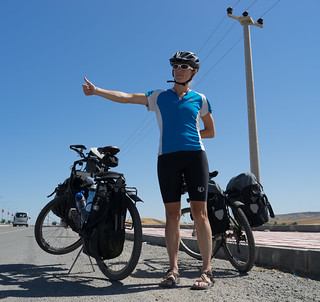
The journey felt more disjointed than my ride across Latin America, partially because of the non-bicycle travel, but largely because each country in Asia was so different from the previous country—and sometimes within-country differences were greater than cross-country differences in the Americas. In Latin America I was able to travel for 16 months speaking Spanish or, in Brazil, a hybrid of Spanish and Portuguese. The countries of the region share a history of colonization by the Catholic Iberian nations of Spain and Portugal, and many have similar challenges and levels of development. They are culturally more similar to each other and the United States than the nations we crossed in Asia are to each other. The Latin America journey was a ride across a landscape with a common history and relatively unified identity.
In Asia, I was mentally unprepared for the diversity of language, religion, culture, and government. We tried to learn bits of Turkish, Russian, and Chinese as we traveled. But it was extremely challenging, and I found it exhausting to have studied so much and learned so little. When we reached South Asia, I had no energy left to learn more languages. In Nepali, Hindi, Bengali, and Myanmar, I learned nothing more than the basic “hello,” “thank you,” and “goodbye” (fortunately, English is relatively common in South Asia, so we were able to get by).

We were constantly reminded of the ever-present influence of religion in people’s lives. In Turkey, it was the five-times daily call to prayer, the difficulty entailed in purchasing a beer, the pictures of imams on our hosts’ walls, and the very different social norms for men and women than what we experience in the U.S. In Tibet, we witnessed people in endless processions around temples. The holy region’s capital, Lhasa, was filled with Tibetan pilgrims with wrinkled faces and long braids who elbowed their way around us to prostrate themselves before shrines. In Nepal and India, we grappled with and mostly failed to understand the caste system and what it means for some people to be Brahmins and some Shudras. And we learned that we would have to swerve around cows in the street, as they are holy and treated with such reverence that all Indian and Nepalese cattle know they can walk placidly across a road and all traffic will automatically and patiently stop for them. In China, we tried to understand how Confucianism, which is more of a philosophy than a religion, shapes the society, and how “eastern thinking” creates a very different relationship between the individual and society than “western thinking” does (reading this book helped us).

We were especially struck by how women are treated in different societies. Outside the major cities, in Hindu and Muslim regions, we rarely saw women out in the streets. A number of times, Lindsey would point out to me that she was the only woman at a restaurant, or on a crowded street. Reading some recent articles makes me wonder what the men who were staring at us every time we stopped in India were thinking, and makes me glad that we took people’s advice to not be out after dark in Bihar. We loved the hospitality of Muslim culture, and we made many friends who we hope to stay in touch with. But in many places it was the man who invited us in, and then his wife or daughters-in-law (in many places the sons stay and live with their parents and their wives move in) who do the cooking and work—and then sometimes don’t join because it’s not considered appropriate for women to mingle with men outside their immediate family (interestingly, Lindsey was always included with the men, and we joked that people saw her as a third gender: “foreign lady”). It’s hard to feel good about a culture, however hospitable, that prevents women from interacting in public and hides them in the home.
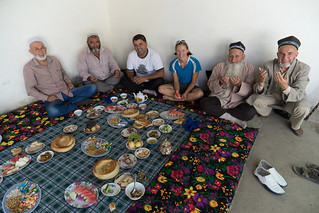
We were also constantly reminded of how corrupt, restrictive, or ineffective governments in many parts of Asia are. It started in our first week in Turkey, when the government—probably the best-functioning democracy we visited—sprayed tear gas to disperse protesters who were complaining that the president had been acting increasingly autocratic. In the former Soviet republics, we encountered states that plastered pictures of their leaders on billboards across the countryside. In most of these countries (with the exception of Georgia), the autocratic leaders from the Soviet era had more or less continued in power. China was the most fascinating. It was both the most effective government and the one that most restricted personal freedoms. We marveled at their new highways and buildings, and how people seemed happy about the recent economic growth, but we were disappointed to see the country’s response to the protests in Hong Kong, where a student movement led a call for greater self-government. It was also sad to travel through Tibet and see colonization in progress. Nepal, India, and Bangladesh had the opposite problem of China: instead of being too strong, the governments in these countries are too weak, and they are unable to provide basic services like electricity, water, and good roads. And in Myanmar, we saw a country that was poor largely because an oppressive military government had nationalized businesses overnight, closed the country to the outside world, and mismanaged almost every aspect of the economy.

Government restrictions strongly affected the course of our trip. Many border crossings are off limits to ‘third country nationals,’ and we needed to get visas for almost every country well in advance of reaching them. For the ‘stans, we had to specify the time period of our travel and make sure to arrive and depart within the visa period (usually one month). This is particularly difficult when you are traveling by bicycle and aren’t sure how long it will take to get to each country, let alone bike across it. By comparison, in Latin America—a much freer region of the world—I could simply show up at the border of almost every country with my American passport and get a visa-on-arrival good for 90 days.
In Uzbekistan and China, we found that we couldn’t send a hard drive of our pictures home to the U.S. through the mail because the government didn’t allow such data to be freely sent out of the nation. In China, we were reminded daily about the government’s desire to control information because we had to use a VPN to get around the Internet censorship simply to check gmail. In addition, China prohibits independent travel in the Tibet Autonomous Region, which basically meant that we could not reach Nepal and India overland on a bicycle without paying many thousands of dollars for a tourist-approved jeep with driver and guide to literally follow us every day as we cycled across the plateau (which is why we went for a cheaper but still very expensive group tour bus ride to the border with Nepal). When we tried to enter India, we were held up for five hours because the Indian embassy that had issued my visa had printed my passport number incorrectly (they eventually let us through). Finally, in Myanmar, we were told by other travelers that it was illegal to sleep anywhere other than a hotel that was authorized to host foreigners, and because such hotels are relatively infrequent, we more or less had to break the law (we think) to cycle across the country.
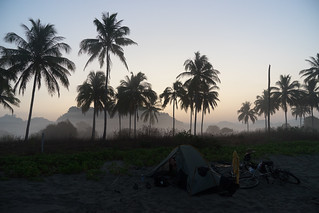
With regard to climate change—the theme of our trip—I end the journey feeling both more and less hopeful than when I began. We interviewed people across the continent, asking them if they think the weather is different now than it was decades ago. We were surprised by how consistent people’s answers were. Whether it was a wheat farmer in Turkey, a yak herder in Tajikistan, or a Tibetan shop owner in Lhasa, people have noticed that the weather is warmer than it was during their childhoods. In South Asia and Myanmar, most people said they noticed changes in the monsoon as well. Climate change is real, and people are noticing.
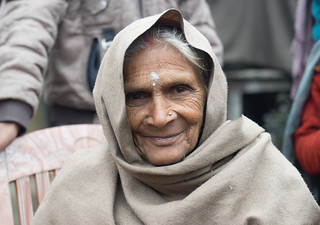
That said, a number of observations made me feel more hopeful. Bangladesh, which I’ve heard is going to be largely underwater in a few decades, is preparing for rising sea levels by building their existing seawalls a meter and a half taller, and bracing for increased natural disasters by dotting coastal areas with cyclone shelters. In the long run, large sections of the country will probably in fact be underwater, but the work underway now means that the tens of millions of people will probably be able to avoid flooding from sea level rise for much of this century. More interestingly, we have seen that economic development is making people less likely to be subsistence farmers, and thus less vulnerable to the whims of climate change. In the mountains of Tajikistan, families said that in recent years there has been less snow than usual in the winter, making it harder to grow food because there isn’t enough water in the summer. But they also said that at least one person from every family was working abroad (mostly in Russia), sending money home, and that families could use these remittances to buy food and other goods instead of relying on subsistence farming.
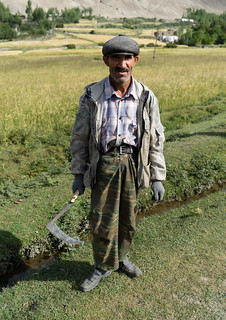
Of course, the climate change that people have witnessed so far is relatively mild compared to what they will likely see in the coming decades. People don’t list the changes in the weather as their biggest concern when we talk to them. But that might change in a few decades, when extreme drought in some places becomes the norm, making some parts of Turkey and Central Asia much drier than they are today, or when sea levels rise by another three feet in Bangladesh.

I am drawn to bike touring across continents because I’m fascinated by our world. Bike touring is a way to take an on-the-ground survey, to ground-truth the satellite images on Google Maps, and to get a gut-sense, a tactile feel, of what it is like for a country to be Muslim or Buddhist, rich or poor, autocratic or democratic. I know so much more now than I did 10 months ago. But what I have learned is dwarfed by what we didn’t learn about the nations we cycled through. When you bike across a country, you don’t see the entire country—you see just a thin sliver, the roads and cities along your path. Most of the country remains unvisited. And that is now how I feel about the continent of Asia. Crossing it has made me realize how little I know.
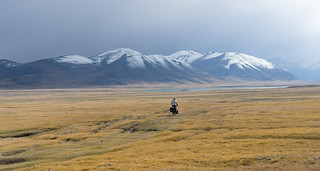
When we think back over our journey, our strongest memory, though, is the same as that of my ride across Latin America: People were incredibly generous everywhere we traveled. Whether it was Bihar India, central Uzbekistan, or Azerbaijan, almost every day we found someone who wanted to help us on our journey across Asia. And what is perhaps most surprising is that I didn’t find this surprising at all. After crossing Latin America, I thought people would be helpful to cyclists everywhere I went. And they were.
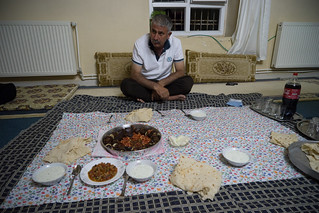
We spent much time in Asia thinking about what sets us apart from the people we met—different education, income, religion, views on equality of women. The life of a Tibetan yak herder in Qinghai Province, a rice farmer in southern Bangladesh, or a businessman in Tajikistan’s capital are all vastly different from our lives in the U.S. But while we were noticing the differences, it felt as if the local people were making a counter argument: we are all the same. They saw that we were on bicycles, and that we were sometimes tired, hungry, and uncomfortable. They shared a meal and a roof with us. In Muslim culture, we were told that “guests are gifts.” In Hindu Bihar, we were told by a host that “guests are gods”—which might be extreme, but I also like the idea that hosting another person is a holy act, as it is something that is understood and practiced across the globe. And we feel lucky to have partaken in this act with countless people across the continent.
